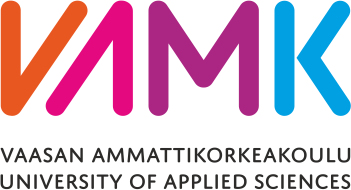
Ports, energy and water resources discussed in Turku
On 5-7 February 2025, Turku University of Applied Sciences hosted the West Coast Workshop, which focused not only on energy and water resource management, but also on the future of ports and logistics. The event addressed current challenges and opportunities from the perspective of regional cooperation, in particular to promote sustainable development, security of supply and digital solutions. Discussions focused on the roles of different actors, the potential for cooperation and concrete measures to strengthen the West Coast’s economy and infrastructure in the future.
The West Coast Workshop programme offered a diverse mix of workshops, networking and exploration of topical issues. The event kicked off on Wednesday evening with a relaxed pizza evening in Educity’s coffee room, where participants had the opportunity to network and exchange ideas before the actual workshop days.
On Thursday, the workshops kicked off after morning coffee and welcome words. During the day, participants delved into key development topics on the West Coast, such as energy, ICT and robotics, the circular economy, 3D printing, manufacturing, and social and health care. In addition to the workshops, the programme included excursions to key sites in the Kupittaa area, such as the Compass Hospital, the ICT showroom and the Energy Lab. The day culminated with dinner in Educity’s café.
On Friday, the workshop work continued, with a meeting of the rectors of the higher education institutions. After in-depth discussions, the event ended with a lunch together.
Sustainable development at the heart of energy and water management
One of the issues raised in the energy debate was the challenges of electricity grid stability as domestic energy storage becomes more common. The potential of carbon capture and the potential of small nuclear power plants and nuclear-powered ships for energy production were also examined.
As regards water resources management, the VHOPIS project, which aims to streamline clean transition investments through cross-sectoral cooperation in the water sector, was discussed in particular. Centria, VAMK, SAMK, Turku University of Applied Sciences and others are involved in the project.
Ports and logistics as drivers of cooperation and resilience
The workshop also addressed the role of ports in sustainable logistics and security of supply. West Coast operators considered ways to improve port resilience and develop digital solutions such as electronic cargo manifests and port snapshot systems.
Particular attention was paid to the Resilient Flow concept, which networks security-critical actors such as the Centre for Security of Supply, the Finnish Defence Logistics Agency and the Finnish Ports Association. The first phase aims to bring together public actors and the second phase will bring together port companies and logistics operators.
Working together for a more sustainable future
The West Coast workshop strengthened regional cooperation and provided guidelines for future development projects. The Vaasa University of Applied Sciences (VAMK), Turku University of Applied Sciences, Centria and Novia, as well as key public authorities and companies participated.
The results of the workshop will be used for example in the development of security of supply and logistics networks and in the planning of new energy and water projects. The next meeting will take place in spring 2025 to promote concrete measures to develop ports and logistics.
Digitalization of Ports and Development of Waterways
Digitalization and real-time traffic information in ports have become significant factors influencing the efficiency, safety, and environmental sustainability of maritime transport. The digitalization of maritime traffic is one of the most important steps in improving port operations. For example, the Port Activity system enables a real-time situational overview of port activities, helping to optimize vessel schedules, reduce delays, and improve resource utilization (Port Activity, 2024). The system provides ports and their clients with the ability to respond swiftly to changing conditions, improving traffic flow and reducing waiting times. This also enables ports to react quickly to exceptional situations, such as weather conditions or changes in traffic flows, enhancing their capacity for proactive operations.
Another major digital solution is Digitraffic’s maritime traffic monitoring, which offers up-to-date information on ship movements, weather conditions, and traffic flows. This real-time data is particularly important not only for ports but also for freight forwarding and logistics companies, which can use it to plan more efficient transport chains. Digitraffic’s service helps predict traffic congestion and reduce waiting times at ports—especially crucial for large ports with constant traffic. Additionally, this data supports the development of environmentally friendly operating models, as transport companies can optimize their routes and fuel consumption, which in turn reduces emissions and the environmental impact of traffic (Digitraffic, 2024). Utilizing real-time traffic information is also a key factor in addressing global challenges such as the changes in maritime transport conditions caused by climate change.
The EMSW (European Maritime Single Window) system, which is used across Europe, is an important tool that standardizes and accelerates the exchange of maritime traffic information. This system plays a central role in reducing bureaucracy and improving cross-border traffic, as it enables faster and smoother information flow between ports and authorities. EMSW is especially important in cross-border traffic between EU member states because it eliminates the multi-step reporting process that has often slowed communication between ports and authorities. As a result, traffic flows more smoothly and with fewer errors, enhancing port efficiency and reducing delays (EMSW, 2024).
Finland’s waterways play a key role in the functionality of its ports, and their development remains a continuous priority. The waterway network maintained by the Finnish Transport Infrastructure Agency ensures safe and efficient navigation between ports along the Finnish coast and inland waters. The maintenance and development of Finnish waterways are especially important, as Finland’s ports are strategically significant for both national and international trade. The agency’s work is an essential part of the development of Finland’s logistics sector, and its role is becoming even more critical as global trade expands and environmental regulations tighten. Ongoing infrastructure development is vital to ensure that waterways can handle increasing traffic volumes and future demands. The agency’s development efforts also aim to improve traffic safety and reduce the environmental impacts of waterways (Väylävirasto, 2024).
Making ports more sustainable is a key objective as part of global environmental protection efforts. VASEK’s project for a sustainable and smart future port is one example of this development. The project aims to promote low-carbon logistics and environmentally friendly operational models within ports. Such initiatives support Finland’s goal of reducing transport emissions and increasing the use of renewable energy in logistics. VASEK also advances smart technologies and digital solutions that enable better resource management in ports and help achieve environmental targets (VASEK, 2024). Finnish ports are increasingly aiming to implement green and innovative solutions that not only enhance environmental protection but also make port operations more efficient and flexible.
In the future, the role of ports will become even more central in global logistics and in meeting environmental goals. Digitalization and real-time traffic information are key tools for improving port operations, reducing delays, and supporting more environmentally friendly practices. At the same time, the development of Finland’s waterways and the promotion of sustainable practices in ports contribute to both national and international climate objectives—making maritime transport more efficient and environmentally sustainable.
The Role of Ports in Security of Supply and Logistics
Ports play a central role in ensuring Finland’s security of supply, as the country’s economy is heavily dependent on maritime transport. The majority of Finland’s foreign trade passes through ports, and their functionality directly affects both business operations and the smooth running of critical supply chains. Ports are vital components of infrastructure, whose ability to operate efficiently and safely is essential not only for daily life but also for national security. The importance of Finnish ports is particularly evident in logistics, as maritime transport is crucial for many industries, such as the transport of raw materials and manufactured goods. The efficiency and reliability of ports directly impact the country’s economic competitiveness and global trade (Huoltovarmuuskeskus, 2024).
Key actors in ensuring Finland’s security of supply and logistics include the National Emergency Supply Agency (Huoltovarmuuskeskus) and the Defence Forces Logistics Command. These organizations work closely together to ensure that ports can serve both civilian and defense logistics under all conditions. The National Emergency Supply Agency plays a critical role in port contingency planning and crisis management, especially during disruptions in international trade, natural disasters, or even military threats. The Defence Forces Logistics Command, on the other hand, ensures that ports are capable of supporting defense needs swiftly and efficiently—particularly in times of crisis when resource use and logistics are under increased pressure (Puolustusvoimat, 2024).
Port operational capacity is also vital in exceptional situations, such as natural disasters, sudden changes in weather conditions, or geopolitical tensions that may threaten freight traffic. In such cases, ports must be ready to adapt quickly and efficiently to changing circumstances. The Finnish Ports Association (Suomen Satamaliitto) plays a key role here by coordinating and promoting cooperation among ports across the country. Ports also collaborate with the West Finland Coast Guard (Länsi-Suomen Merivartiosto) to ensure security and operational reliability under all possible exceptional conditions. The Coast Guard monitors port and maritime safety, especially in sea areas where crisis preparedness and rapid response are crucial (Suomen Satamaliitto, 2024; Rajavartiolaitos, 2024).
Fintraffic’s VTS (Vessel Traffic Services) systems are an essential part of port reliability and safety. VTS systems enable real-time traffic management and control in ports, helping to prevent accidents, reduce congestion, and optimize traffic flow. This is particularly important for maintaining port capacity, as ports are under constant pressure to handle increasing volumes of traffic. VTS systems also serve as critical tools in emergency situations, where fast and efficient traffic control can prevent more serious accidents and disruptions. They enhance port resilience and help ensure that ports can operate smoothly and safely, even when conditions change suddenly (Fintraffic, 2024).
Improving port resilience and security is an ongoing process, and investing in it is important for both Finland’s national security and international trade. Crisis situations can significantly impact port operations, but continuous cooperation among various stakeholders—such as authorities, ports, and logistics companies—ensures that ports can maintain their functionality and support both national and international supply chains under all conditions. In this ongoing development, digitalization and real-time systems like VTS provide essential tools that enable ports to respond quickly and effectively to changing situations.
References
Digitraffic. (2024). Meriliikenne ja reaaliaikainen liikennetieto. Digitraffic. https://www.digitraffic.fi/meriliikenne/
EMSW. (2024). European Maritime Single Window (EMSW). EMSW. https://www.emsw.fi/fi/
Fintraffic. (2024). Vessel Traffic Services (VTS). Fintraffic. https://www.fintraffic.fi/fi/vts
Huoltovarmuuskeskus. (2024). Huoltovarmuus Suomessa. Huoltovarmuuskeskus. https://www.huoltovarmuuskeskus.fi/tietoa-huoltovarmuudesta/huoltovarmuus-suomessa
Port Activity. (2024). Port Activity -järjestelmä. Port Activity. https://portactivity.fi/
Puolustusvoimat. (2024). Puolustusvoimien Logistiikkalaitos. Puolustusvoimat. https://www.puolustusvoimat.fi/fi/puolustusvoimat/organisaatio/logistiikkalaitos
Rajavartiolaitos. (2024). Länsi-Suomen Merivartiosto. Rajavartiolaitos. https://raja.fi/lansi-suomen-merivartiosto
Suomen Satamaliitto. (2024). Satamaturvallisuus. Suomen Satamaliitto. https://www.satamaliitto.fi/fi/organisaatio/tyoryhmat/satamaturvallisuus/
VASEK. (2024). Kestävä ja älykäs tulevaisuuden satama. VASEK. https://www.vasek.fi/aluekehitys/kaynnissa-olevat-hankkeemme/kestava-ja-alykas-tulevaisuuden-satama/
Väylävirasto. (2024). Vesiväylät. Väylävirasto. https://vayla.fi/vaylista/vesivaylat

